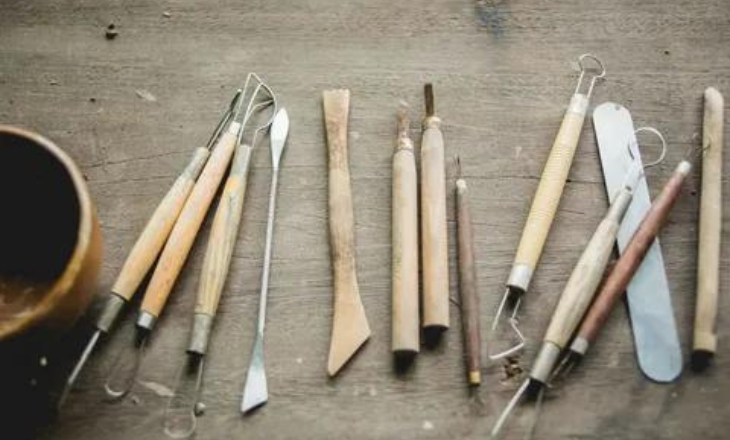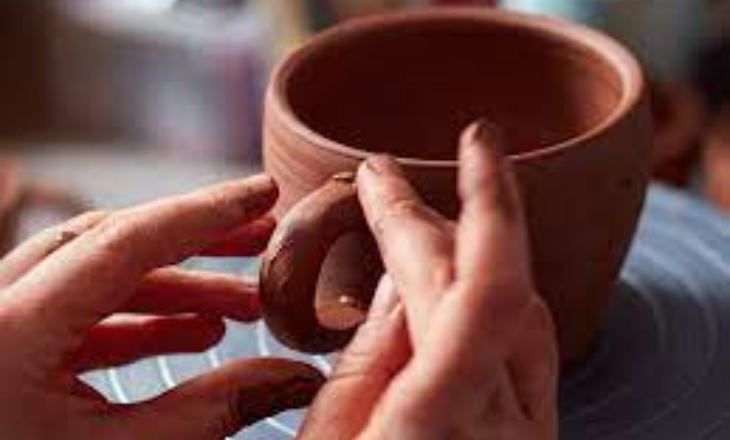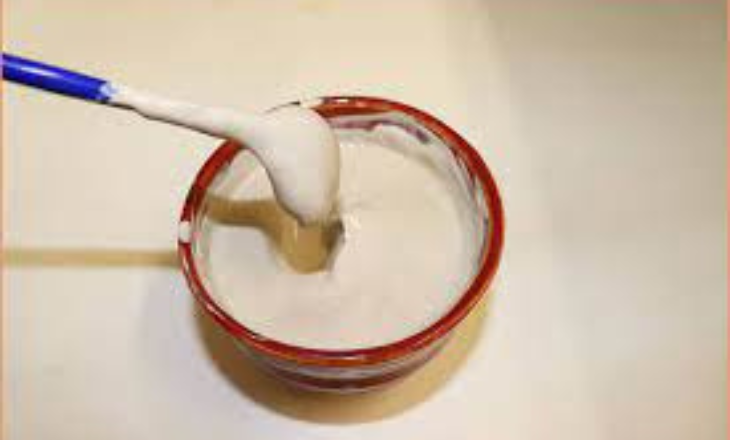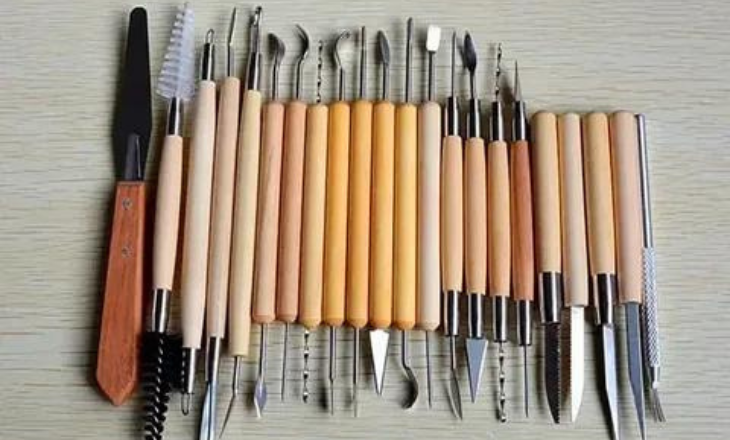Slip & Score techniques play an essential role in the creation of beautiful ceramic pieces. These age-old methods have been used by artisans for centuries. In this article, we will venture into the fascinating world of slip and score, exploring their history, techniques, and contemporary applications in pottery.
What is Slip & Score?
SLIP & SCORE is a fundamental technique in pottery that involves applying a liquid form of clay, called slip, to a surface and then scoring it with textured tools before attaching another piece of clay. This process creates a strong bond between the two pieces and allows for the creation of complex designs and complex shapes in pottery. Slip & score are essential for joining clay pieces without falling apart during the drying and firing processes.

Potters can push the boundaries of traditional forms and experiment with unconventional designs and understanding the properties of different slips can lead to exciting opportunities for combining colors, textures, and finishes, ultimately adding depth and complexity to ceramic artwork.
What is slip in ceramics?
In the ceramics, slip is a crucial component. Clay slip can be described as a liquid mixture of clay and water. Artists use slips to decorate their pieces, add texture, or even repair cracks in fired clay. Its fluid nature allows for seamless application on both wet and dry surfaces, creating intricate designs and adding depth to the final product.
Artists and potters may use slips for techniques such as sgraffito, painting, or creating intricate patterns in their works.

One fascinating aspect of working with clay slip is its versatility in allowing artists to experiment with different textures, colors, and finishes. Slip allows for seamless integration between separate elements of a ceramic work, offering endless opportunities for intricate designs and innovative craftsmanship.
What is scoring in ceramics?
Scoring in ceramics is a fundamental technique that involves creating shallow cuts or scratches on the surface of clay before joining pieces together. This process helps enhance the bond between the clay pieces and ensures that they stick together firmly during firing.

Using scoring in ceramics artists create a rough texture that increases the surface area for better adhesion, preventing the joined sections from separating or cracking as they dry and go through the firing process.
Scoring allows for unique design opportunities within ceramic art. Artists can use scoring not only as a functional method for joining pieces but also as a creative element in their work. The scored lines or patterns can add an aesthetic dimension to the piece.
How to make a slip
Making a slip for pottery is a crucial yet often messy process. To start, pour water into a mixing bucket and gradually add the dry clay powder, stirring consistently to avoid clumps. Once you achieve a creamy consistency, let it sit for at least 24 hours to allow the particles to dissolve fully.
- Collect unused clay and the drier parts of the clay blocks.
- Slice the clay slabs into pieces the size of coins.
- Fill the tub of water with your clay.
- Use a kitchen blender to blend the clay/water mixture.
- compressing your slip to ensure an ideal finish
- To ensure that the ceramic slip doesn’t lose its consistency, store it.
Scoring clay tools
Scoring clay tools are essential components of any sculpting toolkit. One such tool is the clay slip rectifier, which enables artists to repair cracks or imperfections in their clay work by smoothing out the surface and blending the edges. This handy tool not only saves time but also ensures a flawless finish, making it a must-have for seasoned sculptors and novices alike.

Artists can unlock countless artistic possibilities as they turn their imaginations into physical pieces of art with these scoring clay tools at their service. With these tools, artists can bring their imaginations to life in absolutely amazing ways.
When would you use the slip-and-score method?
Handbuilding
Handbuilding is a timeless and versatile approach to creating ceramics. It offers a unique opportunity for artists to connect with their mediums on an intimate level. The tactile nature of hand-building allows for a deeper sense of connection and creativity, as the hands mold and shape the clay into unique forms.
Hand-building pottery enables artists to experiment with various techniques like pinch pots, coils, and slabs, pushing boundaries and exploring new possibilities with each project. handbuilt ceramics often exhibit di
Hand-building celebrates the primal connection between artist and material–it is a reminder of our inherent ability to shape something beautiful from basic elements.
Handles
Handles are an often overlooked but essential part of our daily lives. Another use of slip and score by ceramic artists is the addition of handles to mugs, pitchers, and related utensils. The clay body and handle both have additional pattern designs. A connecting slip will then be used to secure the handle to the vessel.
Traditional Japanese teapots often feature intricate and carefully designed handles that reflect the culture’s attention to detail and aesthetics. Exploring these cultural nuances can provide a deeper appreciation for the diversity and significance of handles in various aspects of life.
Decoration
In decoration, Slip trailing is a technique that has become more well-known because of its distinctive and elaborate designs. Using a tool with a thin tip, liquid clay, also known as slip, is applied to pottery in this method.
The capacity of slip trailing to bring character and uniqueness to every design is one new way to look at it. Every design will have a touch of creativity since the slip application is guided by the artist’s hand, making no two pieces the same. Also, slip trailing encourages artists to push their creative boundaries and try out new approaches by providing an opportunity to experiment with new textures and color combinations.
3 common mistakes with the slip-and-score technique
Rushing the score and slip process
One of the most common mistakes with the slip-and-score technique is rushing the process. Many artists or craftspeople are eager to move on to the next step, leading them to quickly apply the slip and score without thoroughly preparing the surfaces. This can result in weak or unstable connections between the pieces, leading to potential breakage during firing. Taking time to score and roughen the surfaces properly will ensure a stronger bond and ultimately improve the durability of your final piece.
Not having the right slip consistency
Many beginners make the error of either making their slip too watery or too dry, which can compromise the strength of the bond between clay pieces. The ideal slip consistency should be similar to heavy cream – thick enough to hold its shape, but still fluid enough to spread easily.
Not having the right slip consistency can lead to weak connections between clay pieces, increasing the risk of breakage during drying or firing. ceramic artists must pay close attention to their slip preparation and adjust its consistency accordingly for each specific project.
Not scoring deep enough
The slip-and-score technique is a fundamental approach in pottery but many beginners make the critical mistake of not scoring deep enough. It’s important to understand that sufficient scoring might result in weak clay joints, which can cause the pieces to separate or break when fired.
By recognizing the importance of deep scoring and addressing this common misstep early on, potters can elevate their creations’ structural integrity and longevity while refining their understanding of this foundational technique.
Conclusion
Slip and score is an essential technique in pottery that allows for the creation of strong, durable clay structures. By applying slip to the joined surfaces and scoring them with a tool, potters can ensure that their pieces hold together during the drying and firing process. This method not only enhances the structural integrity of the pottery but also provides opportunities for artistic expression through textures and designs.
FAQs
What is the sgraffito technique?
Sgraffito is a decorative technique that involves cutting away parts of a surface layer (such as plaster or clay) to reveal a different colored ground. The word sgraffito comes from the Italian word “graffiare” which means to scratch.
Why does clay crack when fired?
There is a lot of water in clay (around 20%). Therefore the evaporation of the water from the clay can be inconsistent. When one part of the piece dries more quickly than another it puts the entire structure under strain and thus causes cracks.
